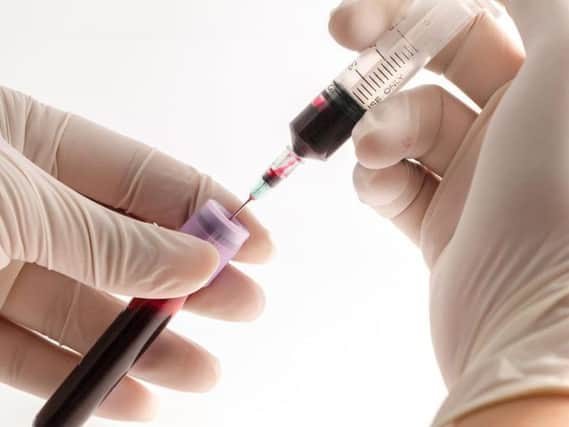Shock hepatitis health warning for Wiganers


Public Health England has revealed the figures as part of a study into the serious blood-borne virus and its grip on the North West.
The disease, which is thought to affect more than half of all injecting drug-users, is more easily curable now than previous decades but the authority shows
that not enough addicts are being tested in the borough.
Advertisement
Hide AdAdvertisement
Hide AdChronic Hepatitis C slowly destroys the liver over a long period of time, often with no obvious side-effects. The authority estimates that more than 400 people are living undiagnosed in the borough, each of whom could spread the virus unknowingly.
A study published by Public Health England shows that between 2012 and 2016, the borough was listed as one of the worst areas in the region for the number of patients admitted to hospital with liver failure or cancer brought on by the virus.
Hep C is a serious condition which can cause liver damage, cancer and consequently death if left untreated.
As a blood-borne virus, it can be transmitted through any blood-to-blood contact including intravenous drug use, accidental needle sticks, childbirth and, in rare cases, sexual activity.
Advertisement
Hide AdAdvertisement
Hide AdHigh-risk groups are considered to be injecting drug-users, healthcare workers who come into contact with blood products and syringes and prison inmates among others.
PHE has revealed that 3.9 in every 100,000 Wigan patients were suffering from Hep C-related liver damage, a number which is “significantly higher” than the England average of 2.4.
And the borough is underperforming when faced with pro-active testing. In 2014/15 only 77.8 per cent of people receiving treatment for intravenous drug use were tested for the virus, a figure considered “significantly worse” than the national average of 81.5 per cent and the regional average of 78.6 per cent.
The report states: “Testing for HCV infection in people who inject drugs is a priority to ensure timely diagnosis and access to treatment services, and prevention of onward transmission of infection.
Advertisement
Hide AdAdvertisement
Hide Ad“A systematic approach to testing in drug treatment services presents a great opportunity to reduce the proportion of undiagnosed infections.”
Prof Kate Ardern, director for public health at Wigan Council, said: “Although Greater Manchester has higher levels of Hepatitis C than in England overall, Wigan Borough’s detection rates are 18.6 per 100,000 of the population, which is in line with the England average. We also have lower infection rates than other areas in Greater Manchester.
“Mortality rates for Hepatitis C in Wigan Borough for under-75s is 0.67 per 100,000 of the population, which is also the same as England overall and is better than the North West average of 1.02. We’re thankful that these rates are low and will continue to signpost people to treatment.
“We focus our efforts on testing people who are known to our drug and alcohol service, as the majority of individuals who have contracted Hepatitis C in Greater Manchester will have done so through drug use. We are also committed to working with health professionals and colleagues in the criminal justice system to increase testing for those individuals who have not previously engaged with our teams.
Advertisement
Hide AdAdvertisement
Hide Ad“From next week, Addaction will begin delivering a new integrated drug and alcohol service for Wigan Borough capturing both young people and adults, meaning intervention and support will be joined up.
“There have been major advancements in the treatment of Hep C recently and treatment is now straightforward. We will continue to work with other organisations to increase diagnoses and access to treatment locally.”
There is a light at the end of the tunnel for many sufferers in the form of a cure which has been developed over the past decade. Previously, chronic patients only had access to widely unsuccessful treatment which would slow the virus but would not cure it completely from the body.
But a recent breakthrough has seen a new combination of drugs with fewer side effects and a 90 per cent cure rate.